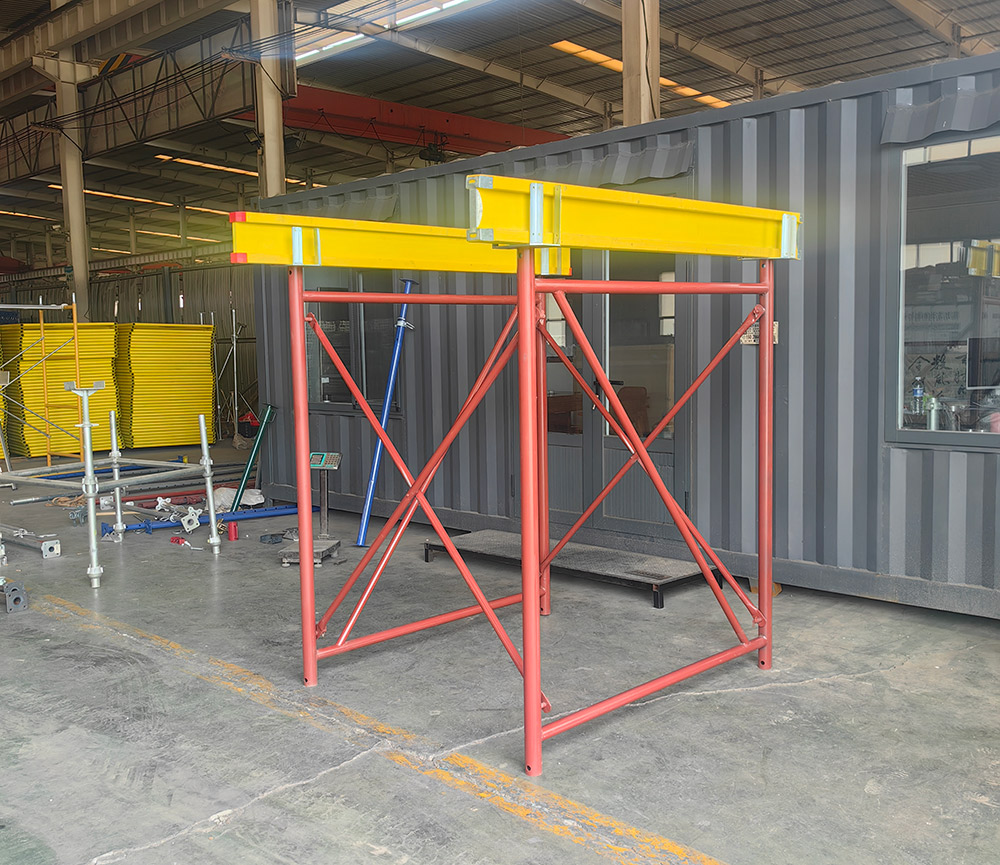In the construction industry, scaffolding is the core tool for facade construction, which directly affects the safety and efficiency of the project. Many self media creators and practitioners often feel confused about the differences between scaffolding, especially the differences between buckle scaffolding, ordinary steel pipe scaffolding, and climbing scaffolding. This article will be based on professional practice and closely follow the real content to analyze the types, characteristics, advantages and disadvantages of these three types of scaffolding one by one. The article focuses on practical knowledge, rejecting exaggeration or formulaic templates, ensuring that the content is professional and practical, and helping you make wise choices in construction decisions.

1、 Pan buckle scaffold: tool based and efficient connection
The buckle type scaffold has significant differences from our common ordinary steel pipe scaffold. It adopts a plug-in vertical connection and a nail cutting horizontal connection, forming a standardized tool system. This design means that the components can be quickly assembled through pre designed sockets and staples, without the need for complex fasteners, thereby improving installation efficiency. Compared to traditional scaffolding, buckle scaffolding is more modular and stable, suitable for routine operations in mid to high rise buildings. However, it should be noted that it is not a climbing system - the buckle type scaffold is a temporary structure built independently, not an attached lifting device. At the construction site, you will observe that the vertical members are directly inserted and fixed, and the horizontal members are locked by cutting nails to ensure overall rigidity. This tooling feature simplifies maintenance and reduces the risk of human error.
2、 Ordinary steel pipe scaffolding: low-cost traditional solution
Ordinary steel pipe scaffolding is the most common type, with the lowest cost, and is widely used in low rise or temporary projects. It relies on snap fasteners (such as right angle or swivel fasteners) to manually fasten steel pipes into a frame. This type of scaffold has high flexibility and is easy to adjust in height and shape, but the connection points are prone to loosening and require frequent checks for tightness. In terms of safety factor, ordinary steel pipe scaffolding has the lowest, as snap connections may slip or deform, especially in harsh weather conditions where the risk increases. However, for small projects or projects with limited budgets, it is still the economic first choice. The overall structure is simple, but the labor intensity is high and the efficiency is low.
3、 Climbing system: a high safety lifting solution
The climbing frame is completely different from the above-mentioned scaffolding. It is an attached lifting system designed specifically for mid to high-rise buildings. The climbing frame consists of a fixed frame bottom, guide rails, and suspension mechanism, with a height of about 14 meters (covering about three and a half floors). As the floor rises, the system gradually climbs through the guide rails without the need for repeated disassembly and assembly. This is different from the tool type fixed structure of the buckle scaffold - the climbing frame is dynamic and can automatically adjust according to the construction progress, greatly reducing the risk of high-altitude operations. The highest safety factor is its core advantage, as the overall frame is stably attached to the wall, reducing the risk of collapse or falling. Of course, this advanced system has the highest cost and requires a professional team to install and maintain.
4、 Cost and Safety Factor Comparison: A Professional Decision Guide
Based on actual engineering data, the three types of scaffolding exhibit a clear gradient in cost and safety:
Cost ranking: Ordinary steel pipe scaffolding has the lowest cost (cheap materials, low labor requirements), followed by buckle scaffolding (tool based design reduces repeated investment), and climbing scaffolding has the highest cost (automation system increases equipment and installation costs).
• Safety factor ranking: Climbing frame has the highest safety factor (overall attachment structure reduces accidents), followed by buckle type scaffolding (plug-in nail connection improves stability), and ordinary steel pipe scaffolding has the lowest safety factor (buckle connection is prone to failure).
When choosing, it is necessary to weigh project requirements: ordinary steel pipe scaffolding is suitable for low-cost short-term projects; The buckle type scaffold balances efficiency and safety, making it suitable for medium-sized projects; Climbing frames are preferred for high-rise buildings to reduce high-altitude risks. The construction party should evaluate the floor height, budget, and schedule to avoid blindly pursuing low cost at the expense of safety.
Conclusion: The selection of scaffolding is a crucial aspect of building safety. The buckle type scaffold improves efficiency with its tool advantage, while the ordinary steel pipe scaffold is based on small projects at low cost, and the climbing frame provides high safety protection for high-rise construction. Understanding these differences can help self media creators and practitioners optimize content dissemination and engineering practices. Remember, the balance between safety factor and cost should be based on specific scenarios - do not sacrifice the big for the small.
This website uses cookies to ensure you get the best experience on our website.
Comment
(0)